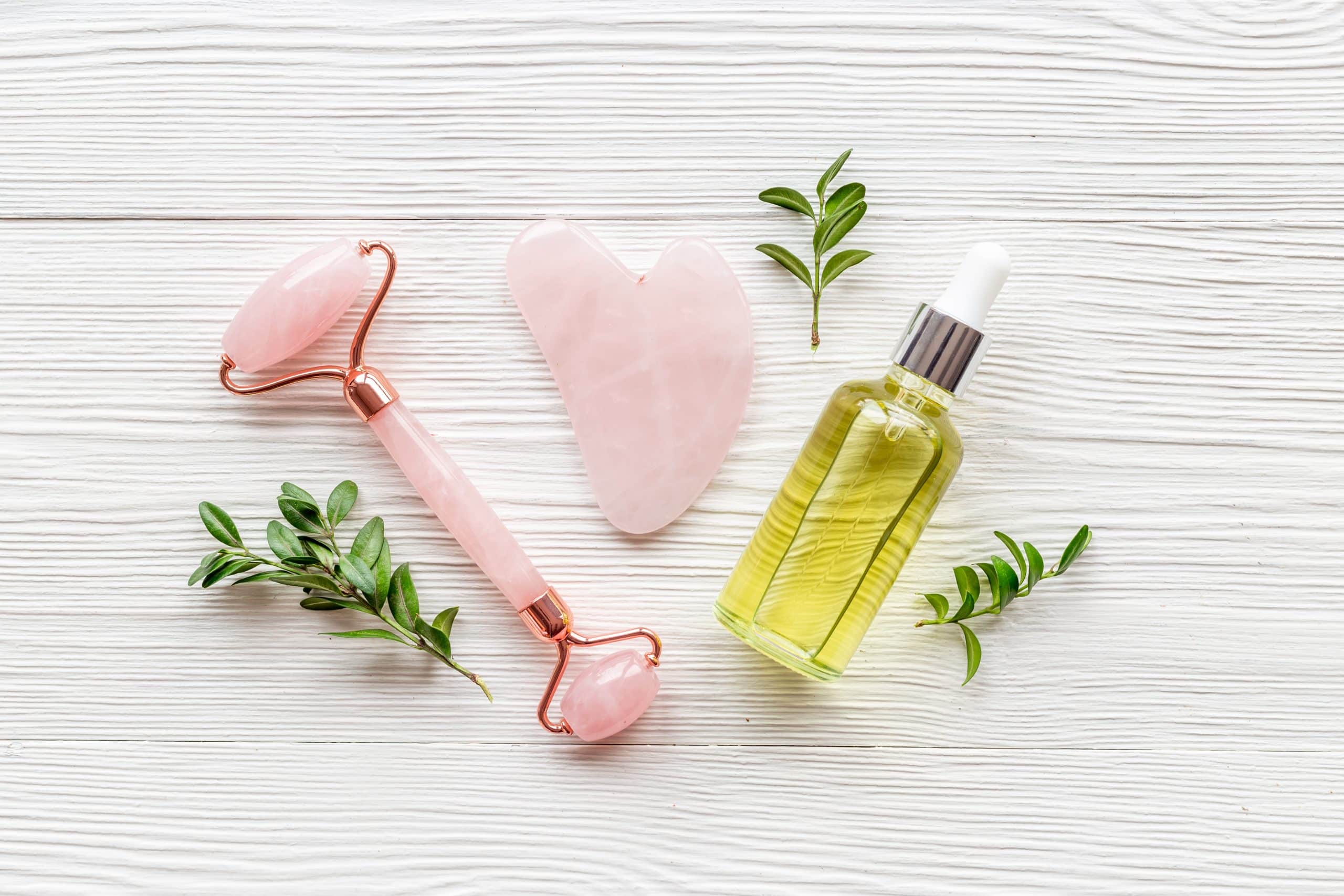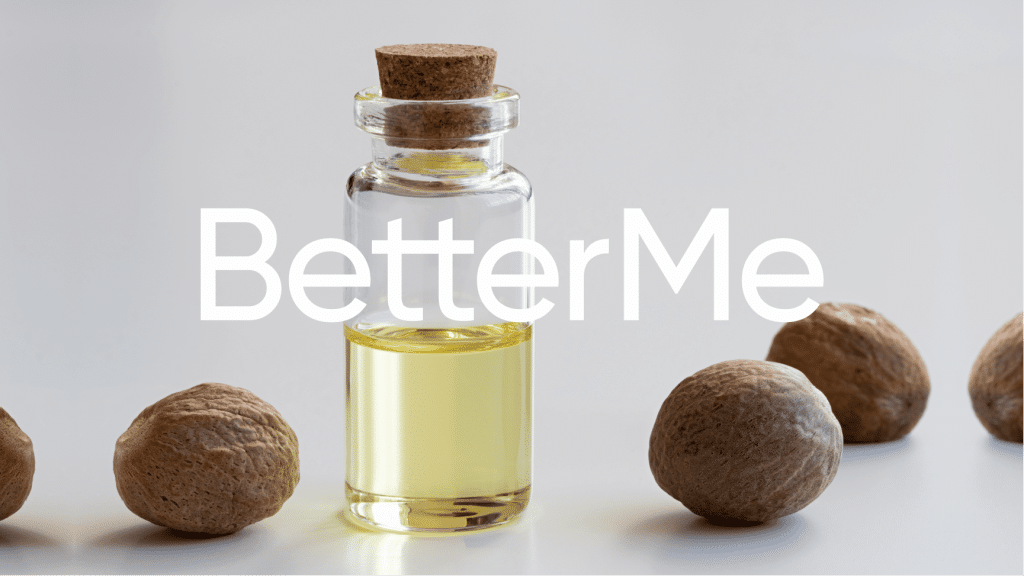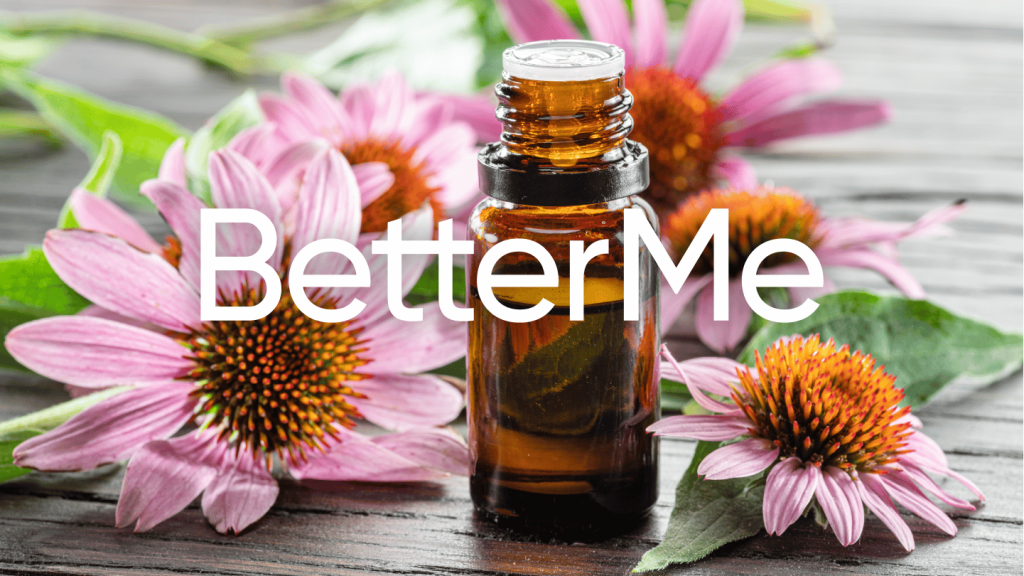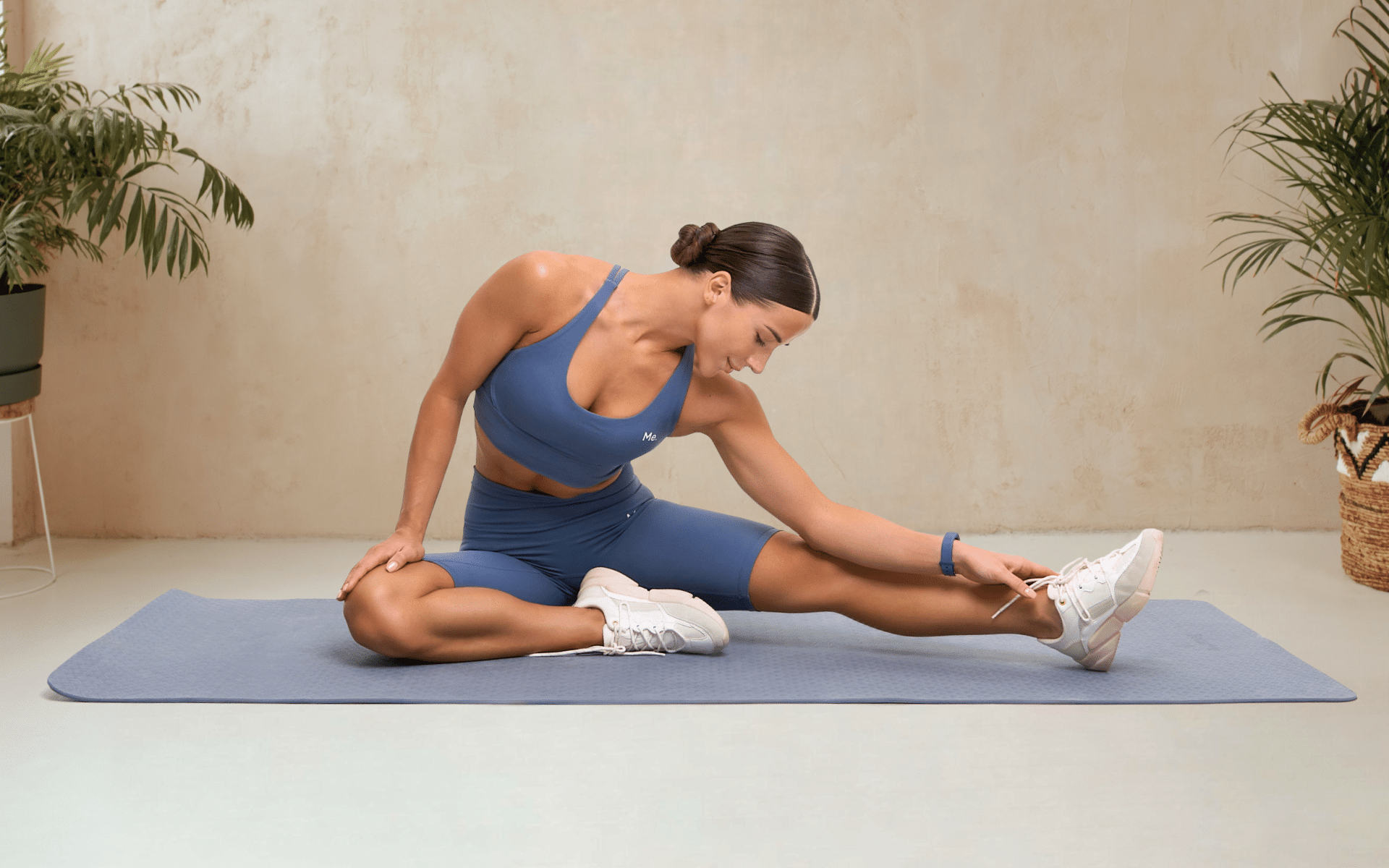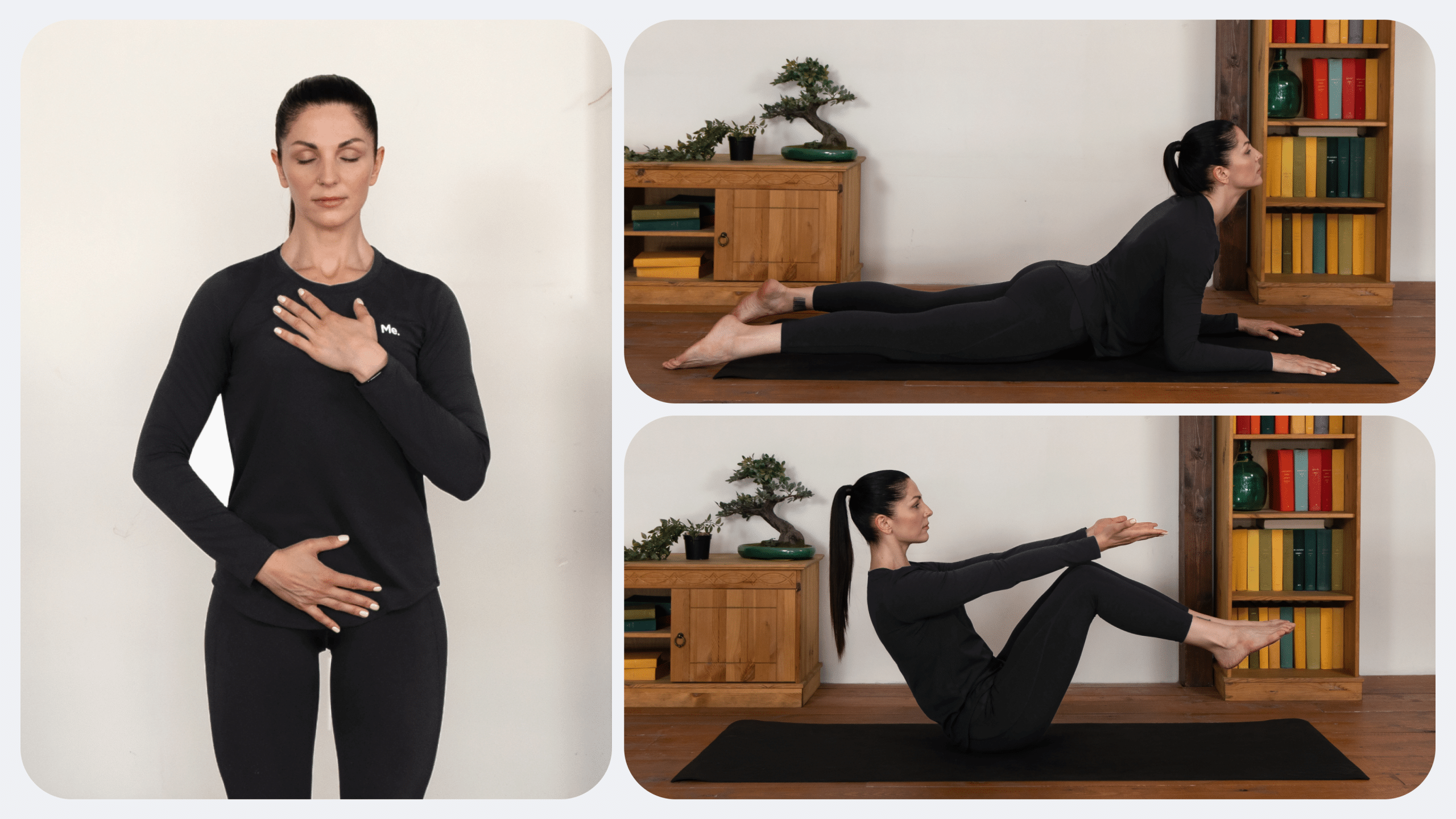Gua sha is an ancient Chinese healing technique used to release toxins from the body and promote healthy energy flow. Multiple studies have shown that this practice can help reduce inflammation, improve circulation, and even decrease the appearance of wrinkles (11). While full-body gua sha treatments are best done by a professional, there are plenty of ways to do smaller gua sha sessions at home. No wonder facial gua sha is becoming an increasingly popular part of people’s skincare routines. But if you want to reap the full benefits of this practice, it’s important to choose the right oil for your gua sha session.
Here’s a list of some of the most popular oils used with gua sha (and why they’re great for your skin):
Jojoba Oil
This oil is non-comedogenic, so it won’t clog pores or cause breakouts. Its texture is also very light and absorbs quickly into the skin. Plus, jojoba contains vitamin E which can help protect against sun damage and reduce wrinkles (5).
Rosehip Oil
It’s rich in antioxidants and essential fatty acids which can help hydrate the skin, reduce inflammation, and even stimulate collagen production (10). Rosehip is also light enough that it won’t leave a greasy residue behind after your gua sha session.
Argan Oil
This oil is packed with vitamin E and fatty acids, so it can help to nourish and soften the skin. It’s also great for treating acne-prone skin, as it helps to control oil production and reduce inflammation (1).
Anyone with scarring due to acne may find that argan oil helps reduce the appearance of those scars (1).
Sweet Almond Oil
This light oil is perfect for gua sha because it won’t leave any greasy residue behind. It’s also great for moisturizing dry skin as it contains a high concentration of fatty acids and vitamins A and E (7).
Read More: Explore The Wonders Of Massage Cupping Therapy: A Guide For Newbies
Apricot Kernel Oil
This oil is rich in gamma-linoleic acid and vitamins A and E, so it can help to repair skin damage and improve the overall texture of the skin. It’s also known to be an excellent emollient, so it helps lock in moisture and keep skin hydrated (2).
Apricot kernel oil is a great choice for those with sensitive skin, as it’s gentle enough to use without causing irritation or breakouts (2).
Tamanu Oil
Tamanu oil is an antioxidant-rich oil that can help prevent skin damage and protect against free radicals. It has also been known to reduce inflammation and promote wound healing, making it ideal for those with irritated or inflamed skin (6).
Due to its thick, oily consistency, tamanu oil is often used as a moisturizer for dry skin and can help reduce the appearance of wrinkles. It can also be used to treat acne, eczema, psoriasis, and other skin conditions (6).
Additionally, tamanu oil has been known to help lighten scars and stretch marks (6).
To make it easier to work with, tamanu oil can be applied to the skin in combination with other lighter oil.
Sea Buckthorn Oil
Sea buckthorn oil is an incredibly nourishing oil that contains a high concentration of vitamins, minerals, and antioxidants. It’s great for those with sensitive skin as it helps soothe inflammation and reduce redness (12).
The omega fatty acids found in sea buckthorn are known to help the skin retain moisture and elasticity, so it can help to reduce the appearance of wrinkles. Plus, sea buckthorn oil is rich in carotenoids which can give skin a healthy, glowing complexion (12).
Grapeseed Oil
Grapeseed oil is a lightweight oil that contains high concentrations of antioxidants and vitamin E. It’s known to be non comedogenic, so it won’t cause breakouts or clog pores (3).
Grapeseed oil helps to reduce inflammation, improve circulation, and can even help fade dark spots and scarring. It’s also known to be an effective moisturizer, so it can help keep skin hydrated (3).
If you wish to cinch your waist, tone up your bat wings, blast away the muffin top – our fitness app was created to cater to all your needs! BetterMe won’t give excess weight a chance!
Do I Need To Use Oil With Gua Sha?
Yes, it’s advisable to use facial oil with gua sha. Here are some reasons why:
It Helps The Tool Glide Easily
Facial oil can help reduce friction when using the gua sha tool, making it easier to massage your face and get into all the nooks and crannies that need attention.
It Provides Nourishment And Hydration
Facial oil can help the skin absorb more nutrients and moisture, increasing hydration levels and helping to keep wrinkles at bay (4).
It Provides A Barrier Between The Tool And Your Skin
Using facial oil creates a protective barrier between the gua sha tool and your skin, reducing potential irritation or damage.
It May Address Specific Skin Concerns
Different facial oils can be used to address specific skin concerns, such as dryness, inflammation, or acne (4).
It Adds Extra Massage Benefits
Not only can facial oil help reduce friction during your massage session, but certain essential oils have additional health benefits that can further enhance your Gua Sha session.
For example, essential oils are often rich in antioxidants and other beneficial ingredients that can help protect the skin from environmental damage, reduce wrinkles and fine lines, and improve overall skin tone (4).
Read More: The Benefits Of Using Natural Soaps For Massage Therapy, And How To Choose The Right Product
Tips For Using Oil With Gua Sha
Don’t make the mistake of reaching for just any facial oil. Here are a few tips to consider when using oil with gua sha:
Know Your Essential Oils
The world of essential oils can be confusing and intimidating. Before using an essential oil, make sure to do your research. Read up on the benefits of each oil, as well as any potential side effects.
Read about which brands are reputable, and what the best practices are when using essential oils.
Read labels, to make sure the product is pure, and not a blend of different oils. More importantly, read reviews from people who have used the oil to get a better idea of what you can expect.
Always Dilute Oils Before Use
Essential oils are a concentrated form of plant extracts, and can be too strong when used directly on the skin. Make sure to dilute your essential oils in a carrier oil (usually a lighter vegetable oil) before you apply it to your skin.
The recommended ratio is usually 15 drops of essential oil to one ounce of carrier oil (8). However, this ratio can vary depending on the type of essential oil you are using and your individual skin’s sensitivity level.
The American College of Healthcare Sciences recommends that you start with a lower dilution ratio, and slowly work your way up until you find the right balance for your skin (9).
Patch Test
Before using an essential oil on a large area, it is important to do a patch test to make sure you don’t have an allergic reaction. To do this, apply a small amount of oil to the crook of your elbow, and wait at least 24 hours.
If you experience any redness, itching, or other signs of irritation, it is best to discontinue use.
A patch test can also help you figure out an ideal dilution ratio. If your skin reacts positively to the oil, you can begin using it more liberally. However, if you experience any irritation, try diluting the oil with more carrier oil, especially if you are using an oil that is known to be more potent.
Keep It Simple
When using oil with gua sha, the goal is to keep it simple. You don’t need a long list of ingredients. Stick to one or two oils, and use a light touch when applying the oil to your skin. The goal should be to nourish and soothe, not overwhelm the skin with too much product.
Furthermore, a long ingredient list makes it harder to identify which oils are causing the reaction if an allergic reaction occurs. Therefore, it is best to stick to a simple routine when using facial oils with gua sha.
Start Low And Slow
When starting out with facial oils, it is best to start low and slow. Start with a lower dilution ratio when applying the oil, and begin with a light touch when performing the gua sha technique. These steps will help avoid any unnecessary irritation or inflammation caused by the oils.
Keep your sessions to a max of five minutes, and gradually increase the time as you become more comfortable with the process. Ensure you go a few days in between gua sha sessions to give your skin time to rest and rejuvenate.
Consider Pre-Mixed Oils
If you are a beginner, or do not feel comfortable mixing your own essential oils and carrier oils, consider using a pre-mixed facial oil.
There are several companies that offer pre-formulated facial oils designed specifically for gua sha, which can be easier and less intimidating for first-time users.
However, make sure to read labels carefully, and only purchase from reputable companies. Some pre-mixed facial oils can contain ingredients that are not suitable for your skin type, so it is important to do your research before making a purchase.
A patch test is still recommended when using pre-mixed oils, as some people are sensitive to certain ingredients.
BetterMe is your fast-track ticket to a long-lasting weight loss! Tailor your fitness journey and maximize your results with just a couple of swipes!
The Best Gua Sha Technique For Face
Now that you know which oils to use and how to use them, it’s time to learn the best gua sha technique for your face.
Bear in mind that the point of gua sha is to stimulate circulation and promote lymphatic drainage. That means you need to use a firm but gentle touch in the direction of the lymph nodes.
Think of it as a massage, rather than a vigorous scrubbing motion. It should not feel painful or uncomfortable – if it does, you are using too much pressure or using the wrong tool.
So first, choose the right gua sha tool. Facial gua sha tools should be smooth and rounded, with no sharp edges or points that could scratch or irritate your skin.
The material should also be smooth and non-porous so it does not trap bacteria or dirt (Jade, rose quartz, and other natural stones are popular materials).
To begin, apply a light layer of oil to your face, and press the gua sha tool firmly against your skin in a sweeping motion from the center towards the edges. Repeat this motion several times, being sure to follow the natural shape of your face.
Once you have finished the sweeping motion, change directions and sweep back towards the center. This will help to further increase circulation and promote lymphatic drainage.
Finally, move to smaller, more targeted areas such as the jawline, cheeks, and forehead. Be sure to use a light touch in these delicate areas.
Avoid these mistakes when performing gua sha
Using Too Much Pressure
When using gua sha, it is important to use gentle yet firm pressure to prevent any damage. If you feel pain or discomfort when performing the technique, chances are you are using too much pressure and should reduce the intensity.
Not Prepping Your Skin
It is important to prepare your skin for gua sha before performing the technique. First, make sure to cleanse the skin thoroughly and apply a light layer of oil. This will help reduce friction and ensure that the gua sha tool glides smoothly.
Not Moving In The Right Direction
Gua sha should be done using gentle, consistent strokes in one direction. Make sure to always move the gua sha tool in the same direction; never go back and forth. Doing so can damage the skin, resulting in irritation and redness.
Not Cleaning Your Tools Properly
When you are done using your gua sha tool, it is important to clean it thoroughly. The tool should be placed in warm, soapy water and scrubbed with a soft brush. Alternatively, you can use a rubbing alcohol solution to disinfect the tool before and after each use.
Overdoing It
It can be tempting to spend too much time on one area when performing gua sha, but it is important not to overdo it. This can lead to bruising and other skin damage, so make sure to limit your gua sha sessions to no more than 15 minutes.
The Bottom Line
Gua sha is a beneficial technique that can help to improve the health of your skin. Using facial oil, the right gua sha tool, and the correct technique can help to promote circulation and lymphatic drainage, resulting in a more youthful complexion.
DISCLAIMER:
This article is intended for general informational purposes only and does not serve to address individual circumstances. It is not a substitute for professional advice or help and should not be relied on for making any kind of decision-making. Any action taken as a direct or indirect result of the information in this article is entirely at your own risk and is your sole responsibility.
BetterMe, its content staff, and its medical advisors accept no responsibility for inaccuracies, errors, misstatements, inconsistencies, or omissions and specifically disclaim any liability, loss or risk, personal, professional or otherwise, which may be incurred as a consequence, directly or indirectly, of the use and/or application of any content.
You should always seek the advice of your physician or other qualified health provider with any questions you may have regarding a medical condition or your specific situation. Never disregard professional medical advice or delay seeking it because of BetterMe content. If you suspect or think you may have a medical emergency, call your doctor.
SOURCES:
- 5 Skin and Hair Benefits of Argan Oil (2015, nih.gov)
- Apricot Kernel: Bioactivity, Characterization, Applications, and Health Attributes (2022, nih.gov)
- Grape Seed Oil Compounds: Biological and Chemical Actions for Health (2016, nih.gov)
- Nature‐based botanical facial oil oxidative stress protection (2020, nih.gov)
- Photoprotective actions of topically applied vitamin E (2000, pubmed.gov)
- Potential of Tamanu (Calophyllum inophyllum) Oil for Atopic Dermatitis Treatment (2021, nih.gov)
- Prospective randomized controlled pilot study on the effects of almond consumption on skin lipids and wrinkles (2019, nih.gov)
- Safety inception (n.d., naha.org)
- Safety Tips for 13 Essential Oils | Part 1 (2021, achs.edu)
- The Benefits of Rose Hip Oil (2022, clevelandclinic.org)
- The effect of Gua Sha treatment on the microcirculation of surface tissue: a pilot study in healthy subjects (2007, pubmed.gov)
- The impact of sea buckthorn oil fatty acids on human health (2019, nih.gov)
